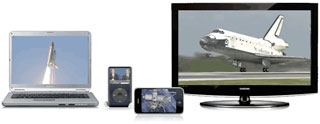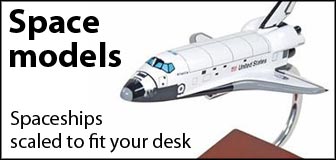Buran, the Soviet space shuttle, flew 25 years ago
BY STEPHEN CLARK
SPACEFLIGHT NOW
Posted: November 15, 2013

The Soviet Union's Buran space shuttle took off Nov. 15, 1988, on an unmanned twice-around-the-world test flight that marked the pinnacle of Cold War space development behind the Iron Curtain, and its legacy still powers space programs worldwide.
The sleek-looking white space plane, bearing a remarkable outward resemblance of NASA's space shuttle, only flew once and never took off with cosmonauts on-board.
The flight began at dawn from the sprawling Baikonur Cosmodrome in present-day Kazakhstan. In 1988, the rocket base was still largely secret and was located on Soviet territory.
About the same size as a space shuttle orbiter, the Buran blasted off attached to the massive Energia booster, one of the most powerful rockets ever built. According to RSC Energia, the launcher's state-owned contractor, the Energia rocket could put 100 tons of payload into low Earth orbit and send 32 tons of equipment to the moon.
One of the major differences between Buran and NASA's space shuttle was the Soviet version did not use solid rocket boosters. The Energia rocket blasted off with the help of four strap-on boosters with kerosene-fueled RD-170 engines, derivatives of which still fly today on the Ukrainian Zenit and are exported to the United States to power the first stages of Atlas 5 rockets.
The RD-170 engine and its still-flying cousins are built by Russian engine-maker NPO Energomash.
South Korea's first space launch vehicle, developed with significant aid from Russia, also used a smaller version of the RD-170 engine named the RD-191. Korea's Naro 1 made its first successful flight in January.
And Russia's next-generation Angara rocket will also rely on the RD-191 engine. Despite years of delays, the Angara is seen in Russia as a replacement for the Proton rocket once it starts flying regularly.
Four cryogenic engines on Energia's core stage helped put the Buran shuttle into low Earth orbit.
The Buran did not carry its own main engines like the space shuttle. All of the Energia rocket's engines were thrown away on each mission.
But the Buran orbiter was meant to be reusable.
After two trips around the world, the Buran re-entered the atmosphere, gliding back to Earth and withstanding temperatures of up to 3,000 degrees Fahrenheit.
Operating entirely on autopilot, oBuran landed at the Yubileiny airfield in Baikonur about 3 hours and 26 minutes after launch, wrapping its only flight in space, according to RSC Energia.
"For the first time ever, a spacecraft of such a class was landed completely automatically," says a mission description on RSC Energia's website.
The Buran shuttle program was canceled after the fall of the Soviet Union.
The flown Buran orbiter, affixed to another Energia rocket to appear as if it was ready for rollout to the launch pad, was crushed in the May 2002 collapse of a hangar at Baikonur. The hangar accident killed eight workers attempting to repair the building's roof.
Photo credit: Buran.ru
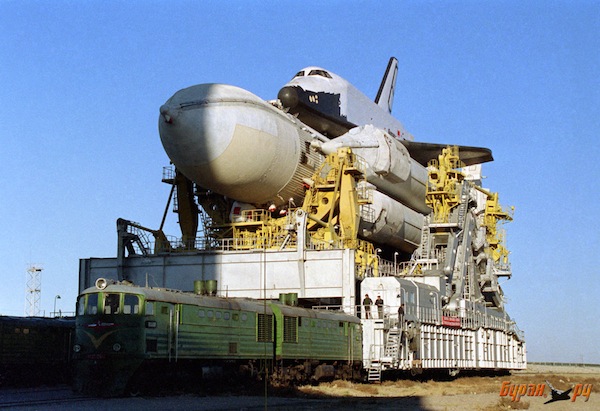
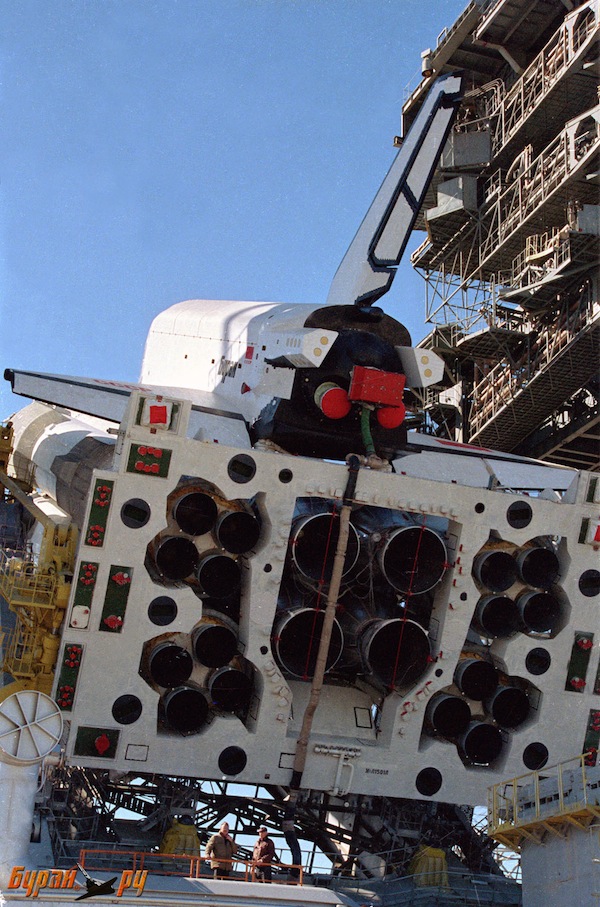
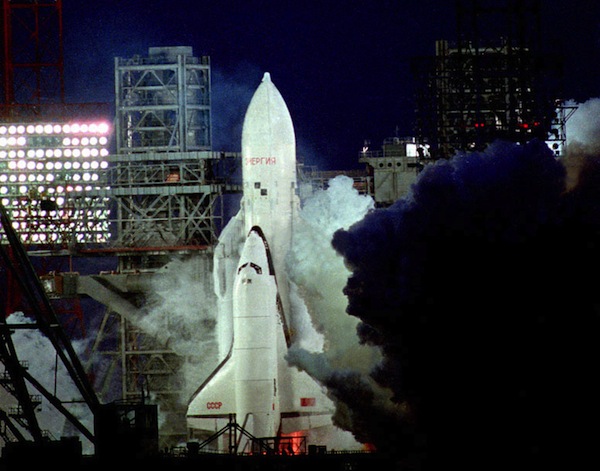
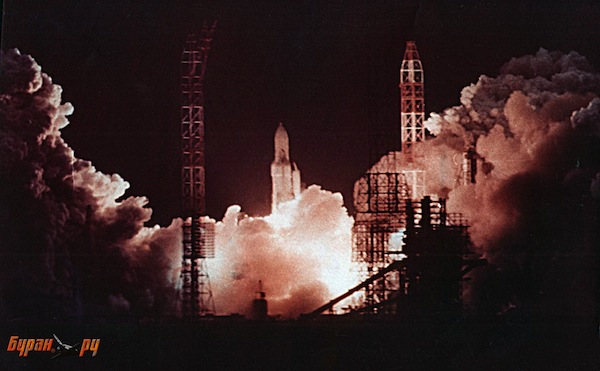
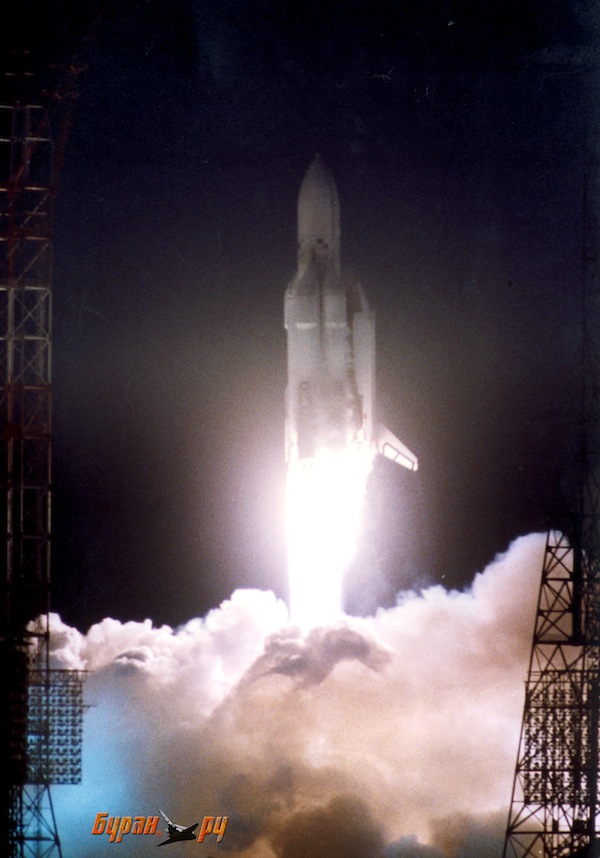
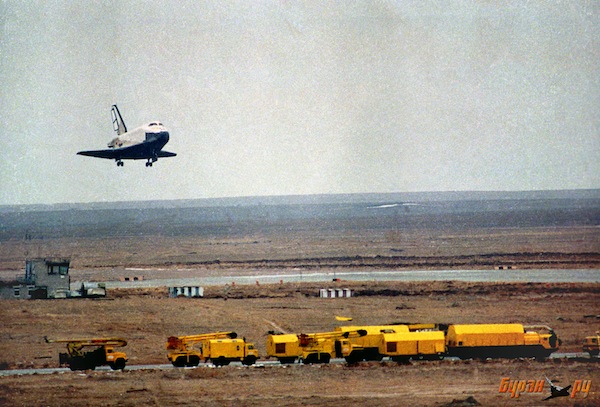
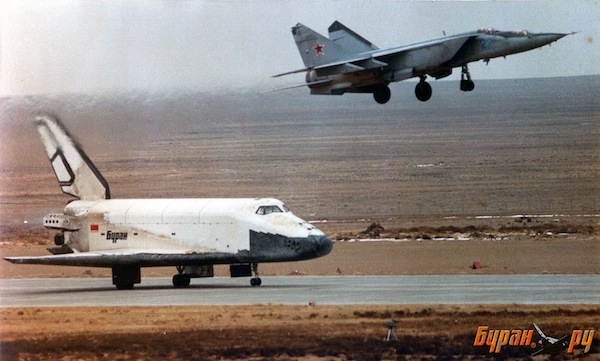

|
|
